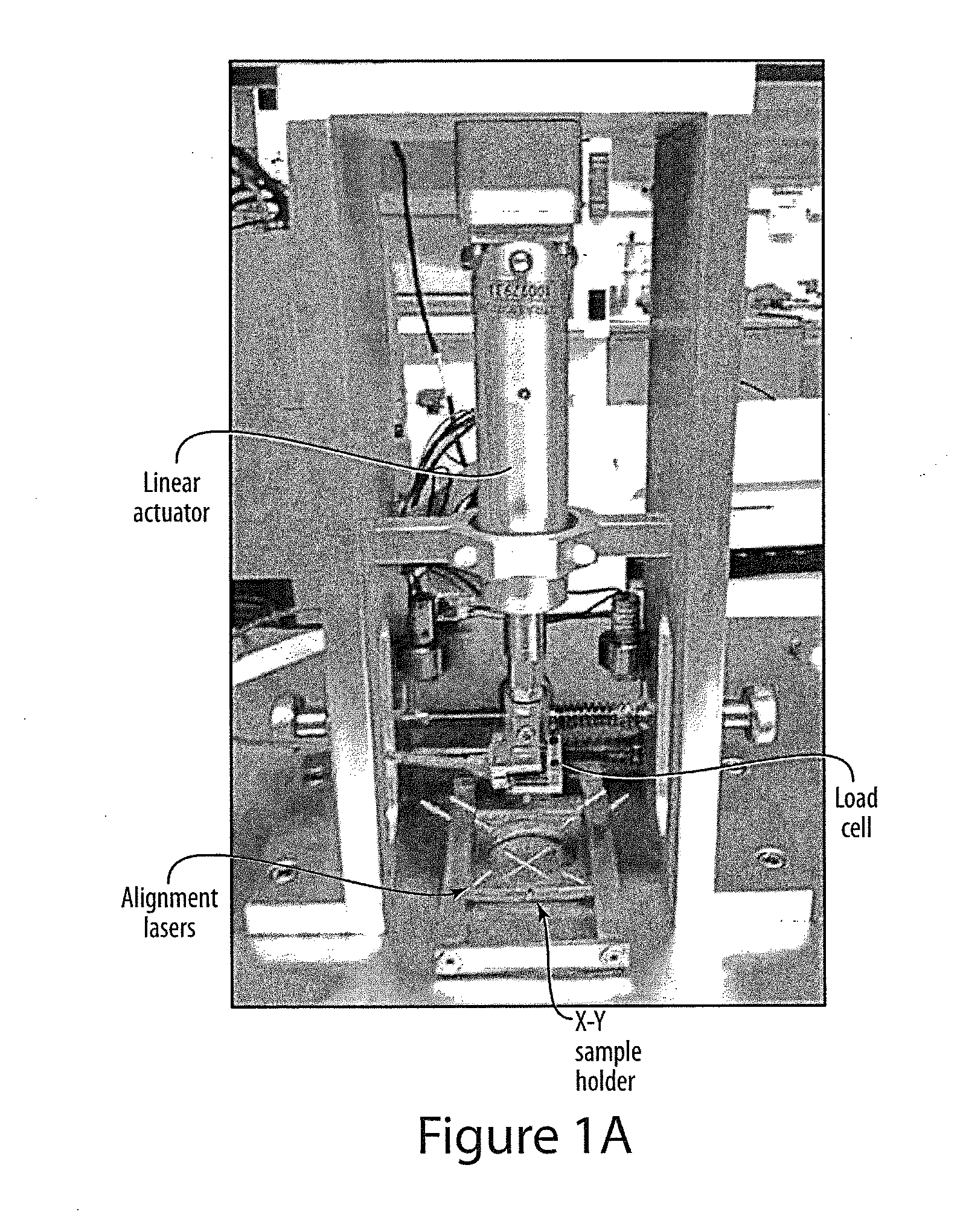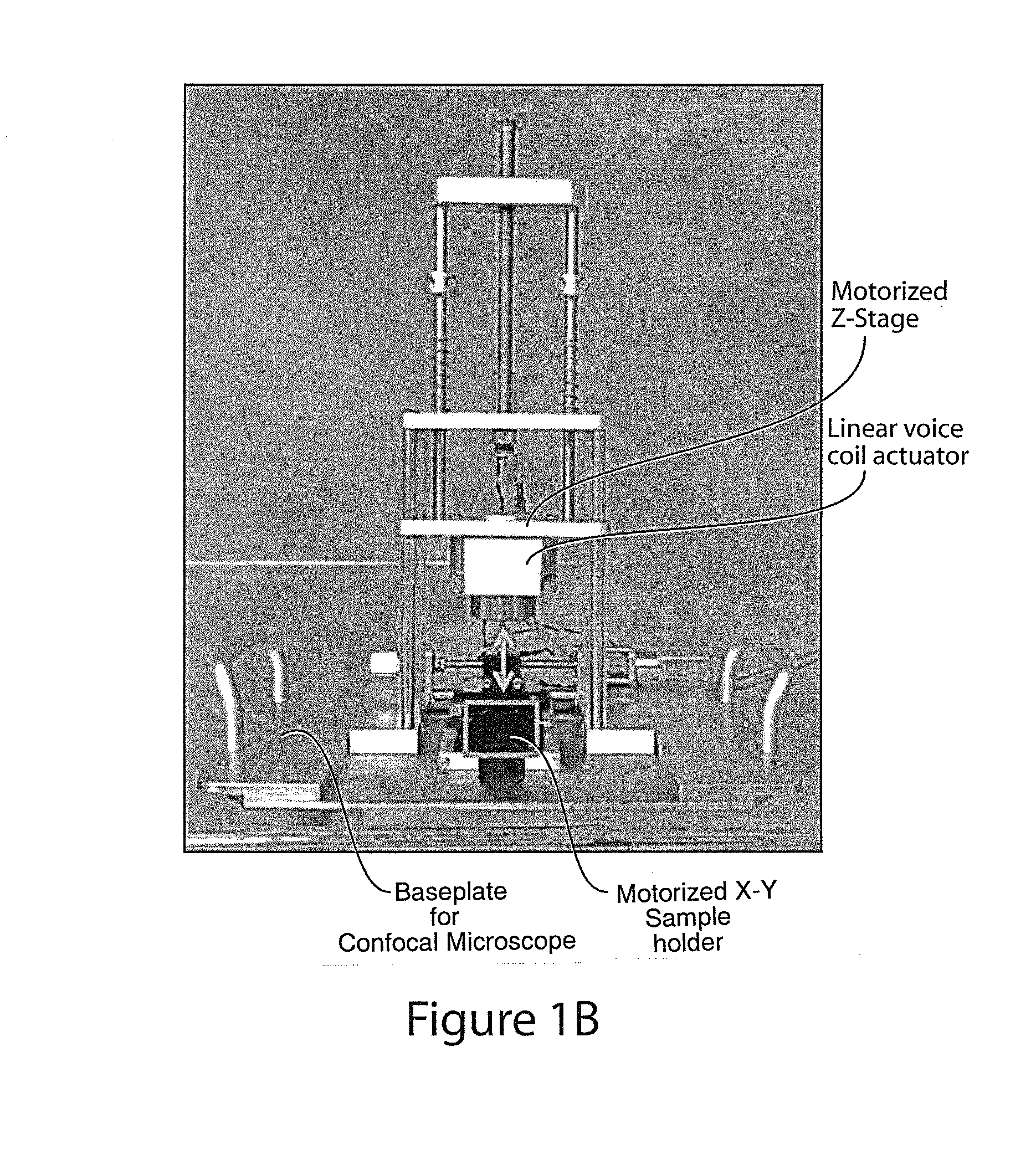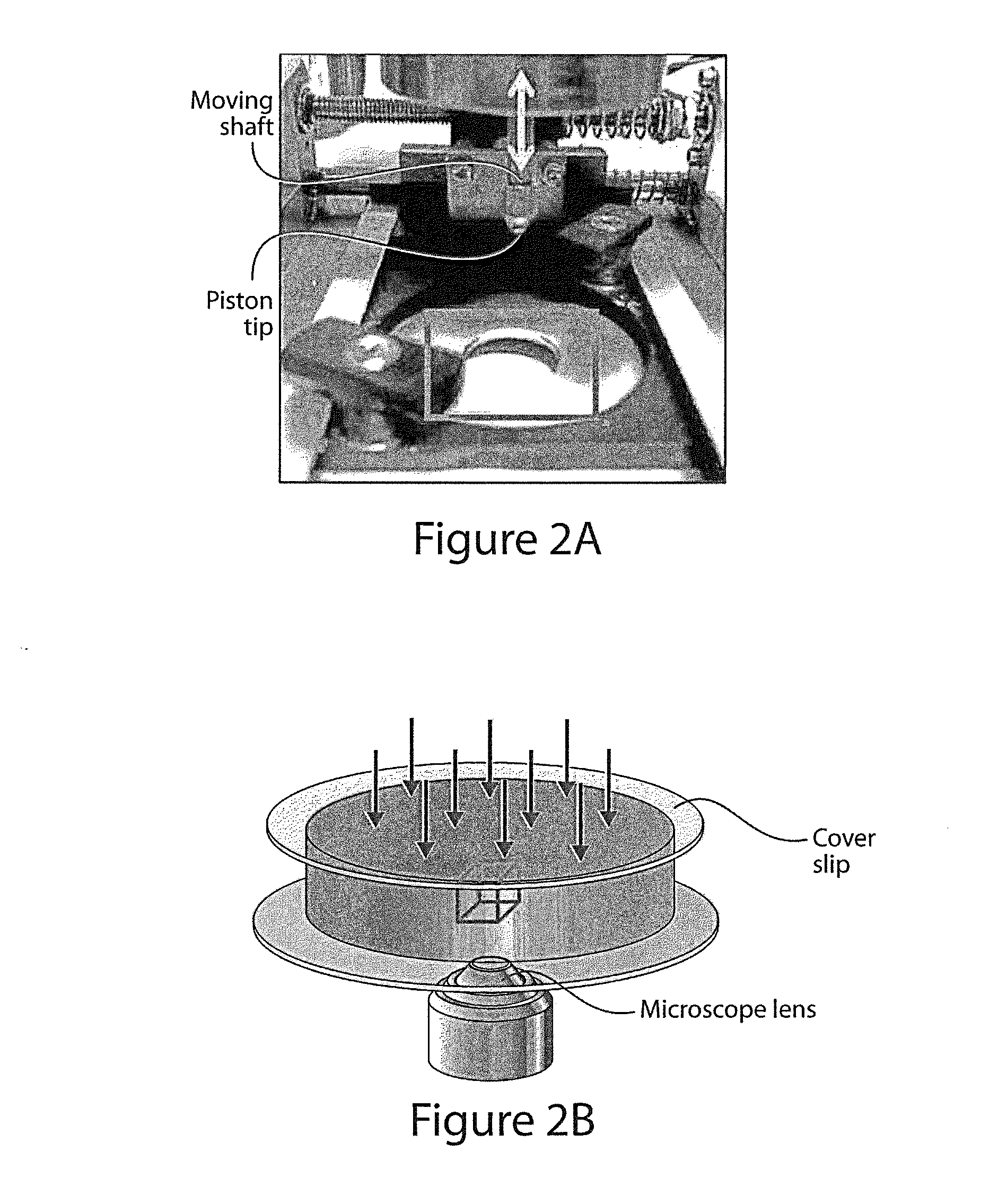Device and system for mechanical measurement of biomaterial
a mechanical measurement and biomaterial technology, applied in the field of biomaterial mechanical measurement devices and systems, can solve the problems of difficult measurement of forces and mechanical characteristics on a cellular scale, and achieve the effects of accurate localized measurement of mechanical properties, accurate quantification of mechanical characteristics and interactions of cells, and high accuracy
- Summary
- Abstract
- Description
- Claims
- Application Information
AI Technical Summary
Benefits of technology
Problems solved by technology
Method used
Image
Examples
Embodiment Construction
[0021]In accordance with one aspect of the invention, actuator device applies axial compression to a transparent medium or culture containing nanoparticles to derive a measurement of a mechanical parameter of interest. A system operates with a scanning laser confocal microscope (SLCM) that performs microscopic volume imaging and correlation of the nanoparticles in digital volume images (voxels) to map a uniform deformation of the medium. As applied to a biomaterial specimen, the system provides an accurate measure of the mechanical parameter of the matrix or cellular material appearing in the volume image and collectively gives an accurate tomographic map of the actual strain at depth. The defamation may be a result of an impulse applied by the actuator, a static compressive load or other deformation-causing actuation applied at the surface of the medium to introduce a uniform axial strain field over a region of the specimen. Furthermore, cell-matrix interactions, such as traction f...
PUM
 Login to View More
Login to View More Abstract
Description
Claims
Application Information
 Login to View More
Login to View More - R&D
- Intellectual Property
- Life Sciences
- Materials
- Tech Scout
- Unparalleled Data Quality
- Higher Quality Content
- 60% Fewer Hallucinations
Browse by: Latest US Patents, China's latest patents, Technical Efficacy Thesaurus, Application Domain, Technology Topic, Popular Technical Reports.
© 2025 PatSnap. All rights reserved.Legal|Privacy policy|Modern Slavery Act Transparency Statement|Sitemap|About US| Contact US: help@patsnap.com



